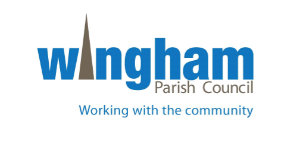WINGHAM’S 20mph ZONE
Helping to make Wingham a healthier and safer part of Kent
UPDATED WEDNESDAY 14 SEPTEMBER 2022
(first published Tuesday 1 March 2022)
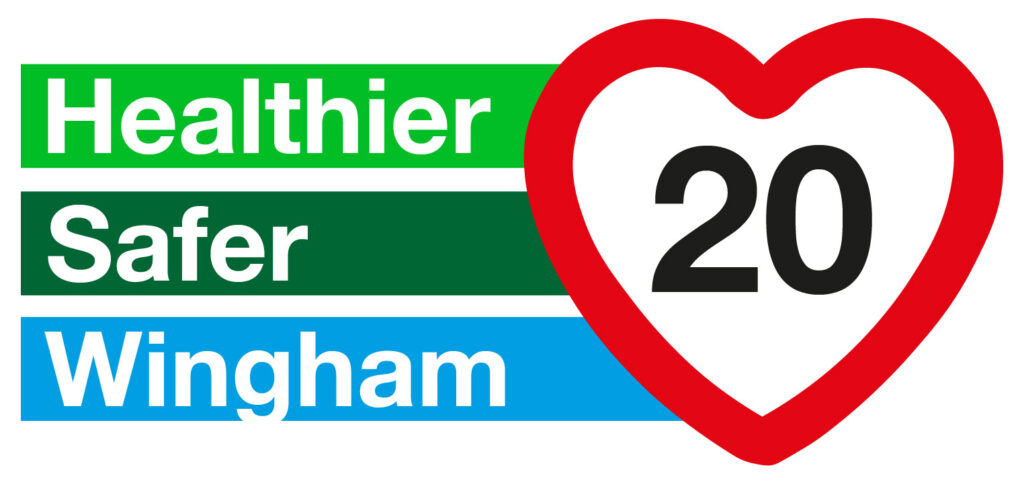
Following a speed survey undertaken by KCC Highways in May 2022, KCC agreed to paint repeater 20mph roundels within the 20mph zone on Canterbury Road, Wingham High Street and the B2046/Adisham Road to help remind drivers that they are driving in a 20mph zone.
- ALL ROADS WITHIN THE ZONE HAVE A 20mph SPEED LIMIT, INCLUDING ALL SIDE ROADS -
The Parish Council have some posters, car stickers, wheelie bin stickers and A5 window clings (see below) to help remind drivers they are in a 20mph zone. If you would like any of these, please contact the clerk via email on clerk@wingham-pc.gov.uk, or use the contact form on this website, or call her on 01227 722189.
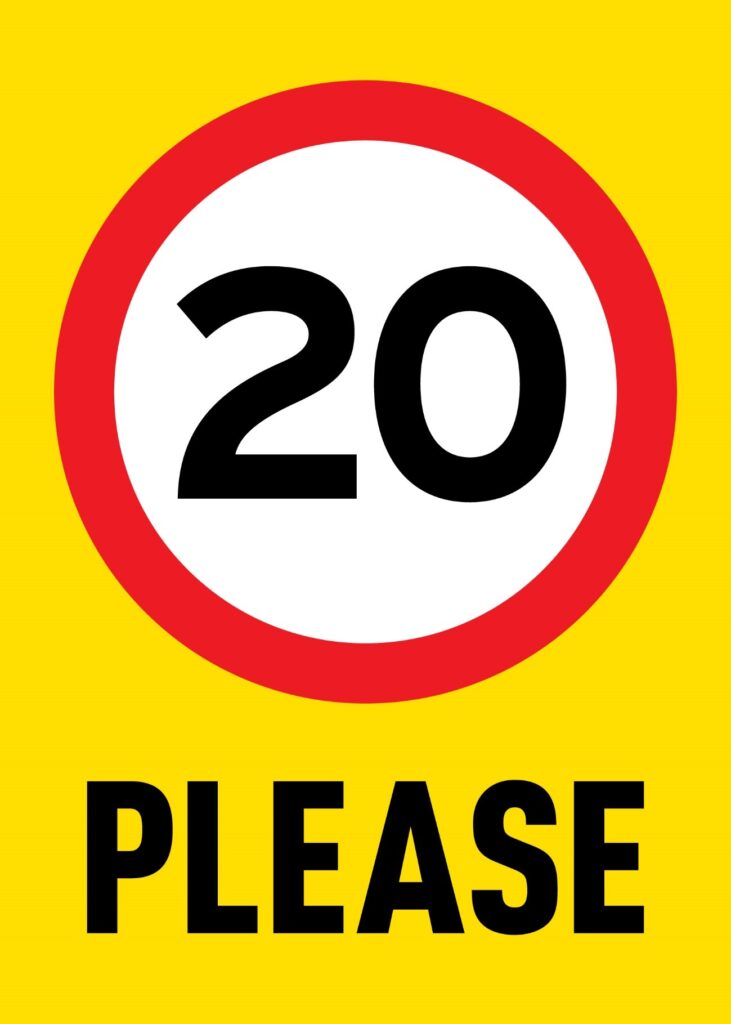
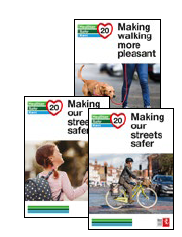
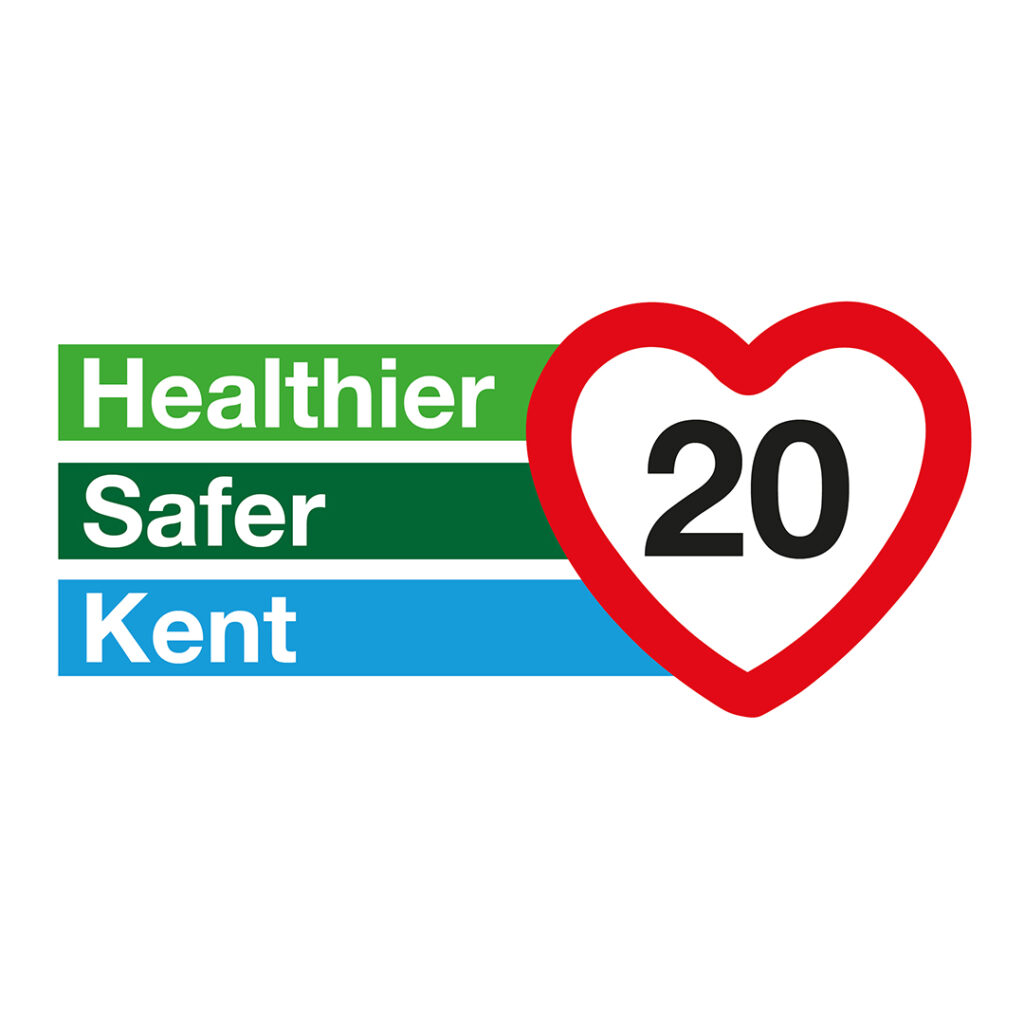
Following the resident survey in February 2021 when the overwhelming majority of respondents supported the proposed scheme, Wingham now has its 20mph zone in place covering parts of the High Street, Adisham Road, Canterbury Road, Staple Road and all associated side roads. The project also includes a 40mph buffer zone at the top of Preston Hill between the 30mph and 60mph sections of road, helping to ensure vehicles slow down as they approach the village from Preston.
The zone is indicated by 20mph signposts at the start of the limit on each main road and some additional road markings including dog teeth and 20mph roundels. The 40mph buffer zone is indicated with 40mph speed terminal signs.
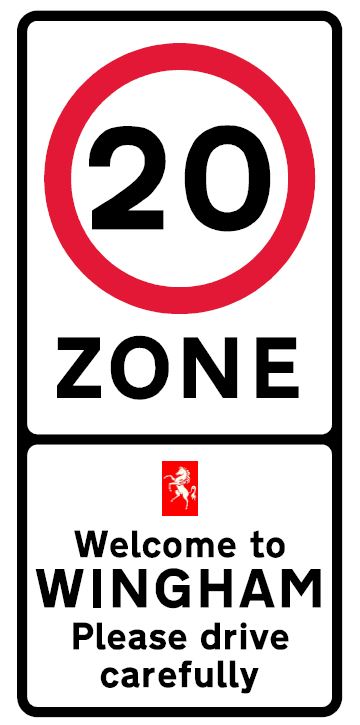
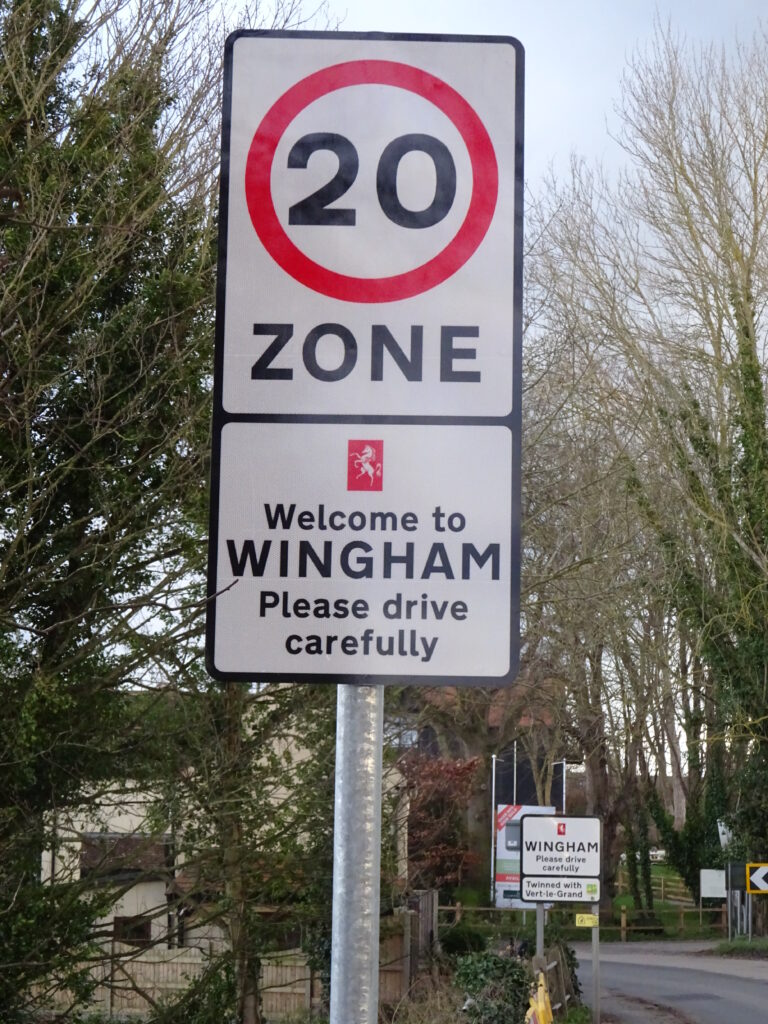
Wingham village sits on the main A257 road between Canterbury and Thanet and experiences a very high volume of traffic of all sizes bringing various issues such as noise, vibration, speeding, damage to property, congestion, and difficulties for pedestrians. Whilst our new 20mph zone cannot reduce the volume or size of traffic it could help to reduce noise and vibration, potentially ease the flow of traffic and improve safety for all road users and pedestrians.
This is the first project on Wingham’s Highways Improvement Plan to be completed through joint working by the Parish Council with KCC Highways and has been funded by the Parish.
KCC Highways will be monitoring the project and will carry out further speed surveys in due course to measure how the scheme is working. They have also supplied Wingham Parish Council with information on 20mph schemes as well as advice and tips for anyone travelling in 20mph areas – see below.
We have also been supplied with car stickers, bin stickers and roadside banners. If you would like a car or bin sticker, please contact the clerk: clerk@wingham-pc.gov.uk
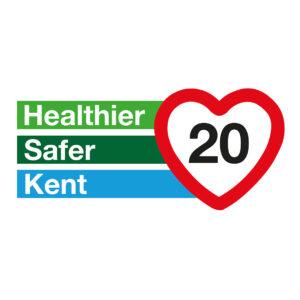
20mph SCHEMES: USEFUL INFORMATION FROM KCC HIGHWAYS
ADVISORY INFORMATION ON 20mph SCHEMES
Speed significantly increases the chance of being injured in a collision. Research has shown that the risk of death for pedestrians struck by cars increases at higher impact speeds, although the exact risk levels varied between the studies. A large proportion of road collisions occur on residential roads.
Local authorities have a number of options when considering introducing a 20mph speed restriction, including:
- 20mph Speed Limits
These involve 20mph traffic signs only. They are suitable for residential estate roads and side streets, where the nature of the road tends to result in naturally low average speeds of less than 24mph. Research indicates that limits achieve an average speed reduction of 1mph.
- 20mph Speed Limit Zone
These involve 20mph traffic signs plus traffic calming measures to ensure that the 20mph limit is self-enforcing. In order that drivers are aware of the zones, traffic signs must be erected at every entrance/exit to the zone. Research indicates that a 20mph speed limit zone can result in speed reductions of around 10mph.
- 20mph Part-time Speed Limits
These involve advisory part-time flashing 20mph signs on main/distributor roads outside of facilities for vulnerable road users such as schools that would otherwise be unsuitable for a full-time 20mph speed limit or zone. The normal speed restriction for the road remains the legally enforceable limit.
Speed Measurement
Mean speed and 85th percentile speed (the speed at or below which 85% of vehicles are travelling) are the most commonly used measures of actual traffic speed. Local authorities collect and assess both when considering introducing a 20mph speed limit and in the monitoring of an initiative. However, mean speeds should be used as the basis for determining whether to introduce 20mph speed restrictions.
Enforcement
Any decision to lower the speed limit to 20mph should seek to avoid the need for extensive police enforcement, as 20mph limits will not be routinely enforced, unless it is absolutely necessary and in the interest of casualty reduction.
A range of other measures should be employed.
These might include behaviour change interventions, vehicle actuated signs and traffic management and other traffic calming measures.
Legislative Requirements
In order to ensure that 20mph limits and speed limit zones are legally implemented and enforceable, a speed limit order must be made which entails advertising and consulting on the proposed speed limit change.
20mph Part-time Speed Limits do not require a legal order. Therefore, an informal consultation is undertaken with statutory consultees and stakeholders including the Local Members, Schools, Kent Police, Town and Parish Councils.
ROAD USER TIPS FOR TRAVELLING IN 20MPH
Pedestrians
- Look for safer places to cross the road – pedestrian crossings, zebra crossings, pedestrian islands, footbridges and toucan crossings are safer places to cross.
- Children learn from their parents/carers and if you have children walking independently, make sure you have taught them the Road Safety Code:
- STOP before the kerb
- LOOK for cars and other traffic
- LISTEN for cars and other traffic
- THINK at all times
- HOLD HANDS Younger children should hold hands with their adult (if the adult is pushing a buggy, the child can hold on to the buggy).
3. Avoid distractions. Common distractions can include mobile phones, headphones, balls, food/drink, and talking to friends.
KCC offers various education programmes to primary and secondary schools; if a school is interested in your area, ask them to contact the Road Safety Team: roadsafety@kent.gov.uk
Motorists
- Get used to the sound and feel of your car travelling at 20mph, so that it doesn’t feel strange. A lower gear selection for the road conditions is likely to be required, 2nd or 3rd in most will work! The engine won’t burn a lot more fuel but it will help you keep to the speed limit.
- Leave plenty of time for your journeys. If you’re not in a hurry, you’re less likely to feel under pressure to rush.
- You must drive at an appropriate speed for the road conditions: 20mph might still be too fast in some areas, especially near schools during pick-up and drop-up times. Be prepared for pedestrians, cyclists and vulnerable road users crossing the road and at junctions.
- Remember at 30mph you travel 13.5 metres every second; at 20mph you will only travel 9 metres. This provides you more space and time to be able to react and avoid collisions.
KCC offers motorist education and training courses for all ages, such as:
- Young Driver Courses delivered in Secondary Schools
- HASTE Courses for motorist who drive for work
- Mature Driver Courses (65+) roadsafety@kent.gov.uk
Cyclists
- Be bright and be seen: wear something fluorescent or bright coloured in daylight and/or reflective at night. Consider using lights even during daylight hours.
- Give good clear and timely signals when you change direction at junctions or move around obstructions, and look before you move.
- Obey road signs, they are there for you as well as all other road users.
- Always wear a cycle helmet. It’s the only thing that will protect your head.
KCC offers cycle training to all ages and abilities, for further information please visit: www.kentcycletraining.co.uk
Power Two-Wheelers
Riding in 20mph zones, especially for long distances, can be tricky if you are on a powerful bike. Try selecting a lower gear. It will help you maintain control and the engine will feel more comfortable at the lower speed.
Maintaining smooth control of a bike at a low speed is an art, practise it somewhere safe and get used to the feel of the bike at low speed.
Kent Police offers Bike Safe Courses for those who hold a full motorcycle licence, for further information please visit: https://bikesafe.co.uk/kent/
